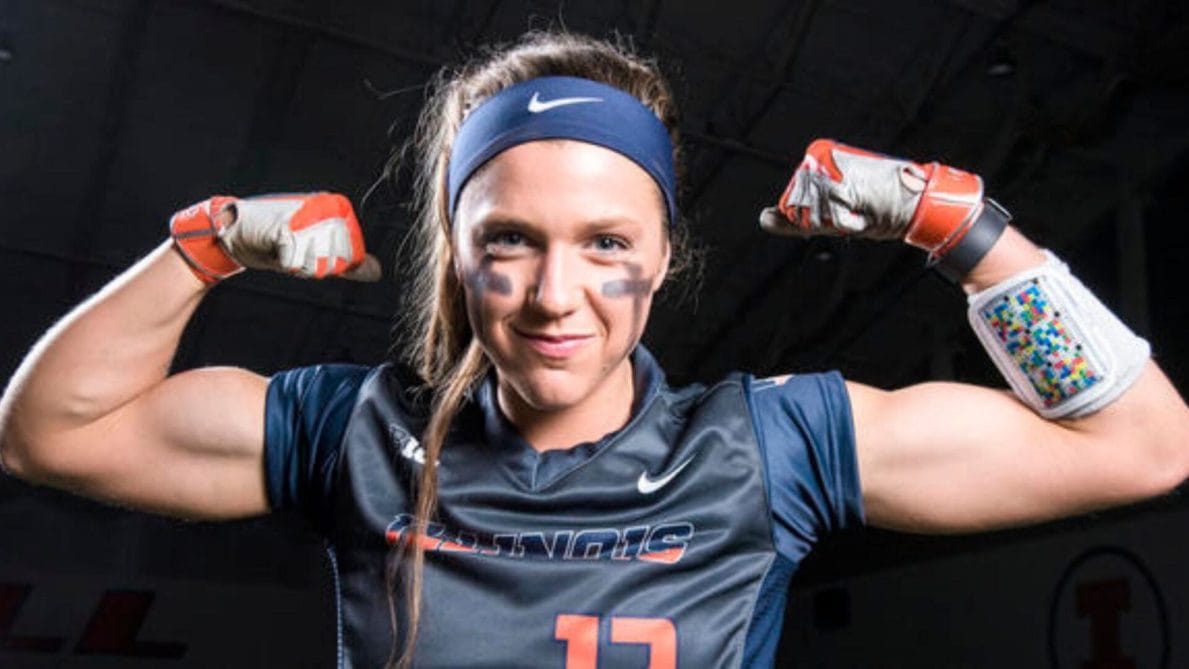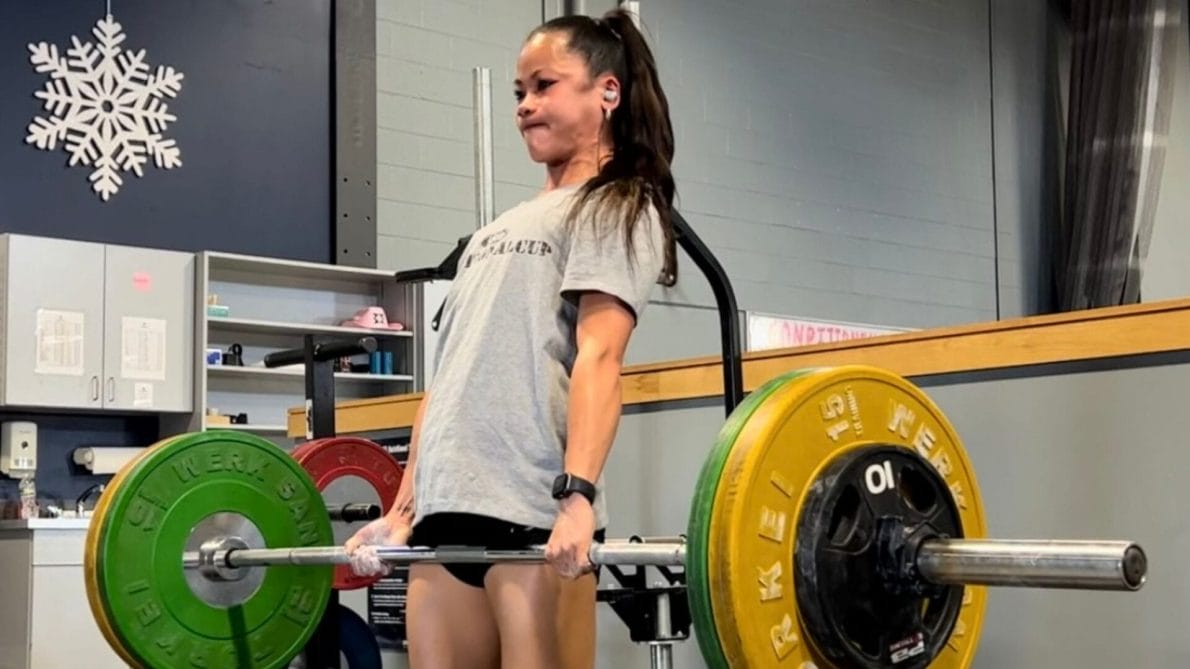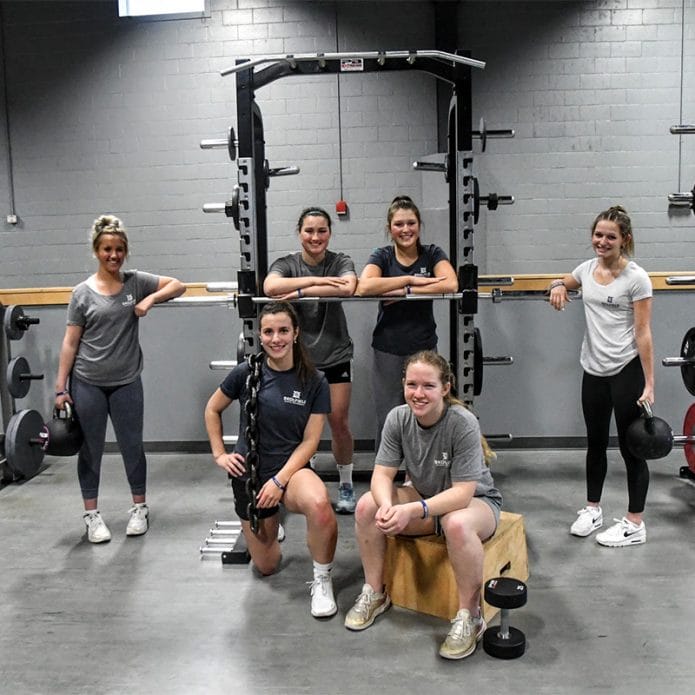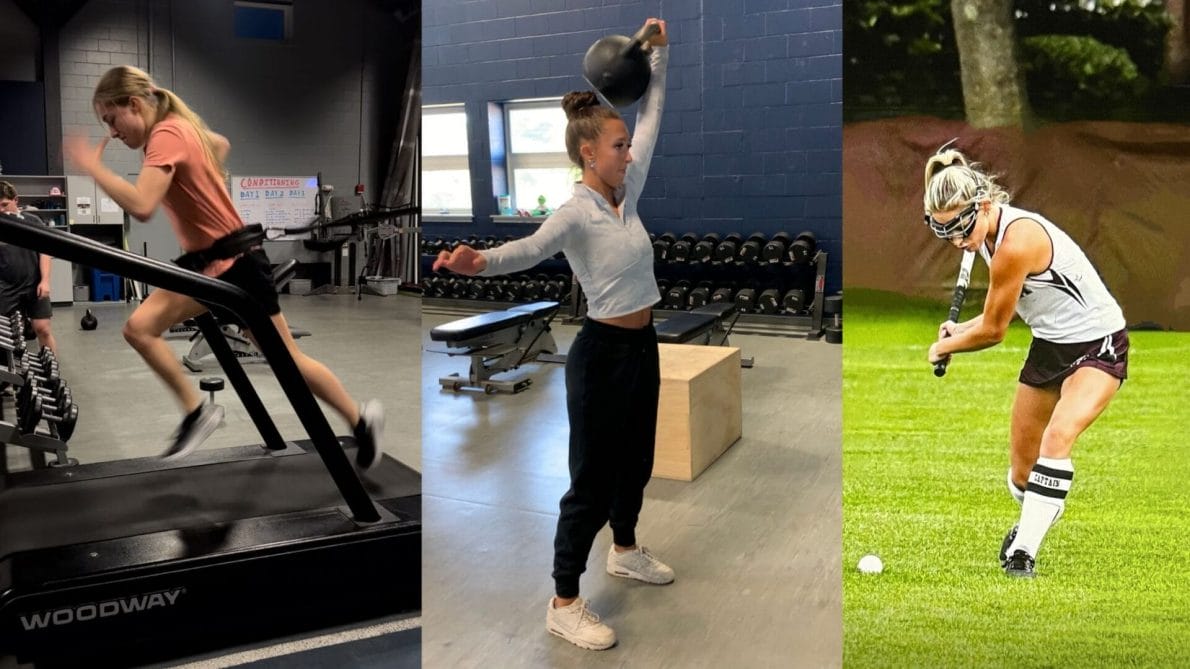
Table of Contents
Introduction:
In the world of sports, the pursuit of excellence often hinges on factors like skill, strategy, and a well-developed physical foundation. However, there’s one element that’s equally crucial yet often overlooked: strength training. Particularly for female athletes, the benefits of strength training extend far beyond the weight room. Let’s delve into why incorporating strength training into their overall athletic development is imperative for today’s female athletes.
In my 25+ years of being an Athletic Trainer and Strength Coach, I have had the opportunity to see firsthand the impact that strength training can have on a female athlete. Generally speaking, female strength to bodyweight ratios are less than those of their male counterparts.
That being said I have never seen a case of a female athlete who has become too strong. I have seen hundreds of cases of female athletes who have taken up strength training and it has had a tremendous impact on their athletic careers. The sooner athletes, coaches, and parents can catch up to this notion and implement strength training as part of their overall athletic development the faster that athlete will become an impact player at the next level.
Let’s delve into the three primary reasons why resistance training can significantly influence a female athlete’s career, while also addressing two prevalent misconceptions among females interested in starting a strength program.

Why Female Athletes Must Embrace Strength Training
1. Minimizing Injury Risks
The likelihood of female athletes tearing their ACLs (Anterior Cruciate Ligament) compared to males is notably higher. Research indicates that female athletes are at a significantly greater risk of ACL injuries than their male counterparts, with some studies suggesting that females are up to 6-8 times more likely to experience ACL tears than males participating in similar sports activities.
I’ve written previously about the impact that weight training can have on preventing non-contact ACL injuries in female athletes. You can read that article here. The bottom line is this- statistics reveal a stark reality: without consistent strength training, female athletes face a 3.6 higher likelihood of overall lower limb injuries, including ACL tears, hamstring strains, patellofemoral pain, and ankle injuries. These figures underscore the necessity of a structured strength program to mitigate injury risks across all age groups.
Weight training assists in controlling forces during deceleration, change of direction, and jumping landing. It does this by allowing females to get into better positions to leverage their core, glutes, and hamstrings to counteract these forces. This diminishes the risk of injury and improves overall multidirectional speed.
2. Enhancing Joint Awareness
Female athletes possess unique physiological structures that necessitate tailored training approaches. Addressing factors like posture correction, balance enhancement, and technique refinement through strength training can enhance joint awareness, minimizing the risk of injury during dynamic movements.
Strength training plays a pivotal role in enhancing joint awareness among female athletes, offering a crucial advantage in injury prevention and performance optimization. By engaging in targeted resistance exercises, athletes develop a heightened sense of proprioception or awareness of their body’s position in space. This heightened proprioception translates into improved joint stability and control, reducing the likelihood of injury during high-impact activities such as running, jumping, and cutting. As muscles surrounding the joints grow stronger and more responsive, athletes are better equipped to maintain proper alignment and biomechanics, mitigating the risk of strain or misalignment that could lead to injury.
Furthermore, strength training facilitates the development of balanced musculature, which is essential for maintaining optimal biomechanics during dynamic movements. Through exercises that target key muscle groups involved in running, jumping, and cutting, such as the quadriceps, hamstrings, glutes, and core muscles, female athletes can achieve better alignment and coordination in their movements. This balanced muscular development not only reduces the strain on joints but also enhances the efficiency of movement patterns, allowing athletes to generate more power and agility while minimizing wasted energy.

3. Boosting Confidence and Empowerment
In my opinion, the biggest benefit of strength training I have found for females is enhanced self-confidence. This comes from both my observations as well as feedback I get from parents about their daughters. Girls quickly notice the positive impact that increased strength and speed have on their overall empowerment. Simply put, the girls that strength train significantly stand out from their peers both on and off the field.
Increased strength among female athletes produces profound benefits beyond physical performance, significantly enhancing self-confidence and feelings of empowerment. I have found that as female athletes build strength, they begin to realize significant improvements in their athletic abilities, such as increased speed, agility, and power. These achievements reinforce their belief in their capabilities, instilling a sense of competence and self-assurance.
The journey of strength training requires dedication, discipline, and perseverance, leading to a heightened sense of self-confidence. Overcoming challenges in the gym translates to a greater belief in your ability to overcome obstacles both on and off the field.
When they begin to notice the physical transformation resulting from strength gains it fosters a positive body image and improves their self-esteem. Feeling strong and capable in one’s body empowers female athletes to embrace their physical prowess and confidently pursue their athletic aspirations, ultimately shaping a mindset of resilience and determination.

Dispelling Myths: The Journey to Strength
The She-Hulk Myth
This myth reigns as the ultimate challenge, one that I’m convinced will persist despite efforts to debunk it. There are countless biological discrepancies working against females compared to their male counterparts when it comes to building muscle. The biggest one being that their testosterone levels pale in comparison to men, with females possessing only about 5% of the testosterone found in males.
This staggering difference means that, on average, men have twenty times the amount of testosterone coursing through their bodies. Considering that testosterone is the primary hormone responsible for muscle growth, it’s clear they’re up against a formidable obstacle if they aim to achieve Hulk-like proportions. However, by optimizing nutrition alongside rigorous gym sessions the result can be a leaner, tighter, and stronger version of themselves, and fully embracing their potential.
Lifting Heavy Enough
One final thought is that the two biggest mistakes I see with the female athletes who do go to the gym is that they either don’t choose the right training modality and /or they don’t lift heavy enough.
Often when girls go to the gym they are intimated or don’t have a foundational knowledge of what to do, they just know that they need to “workout”. This often leads to young females gravitating towards cardio-heavy activities vs. strength training. They don’t know what they should be doing so they move over to the treadmill, stairmaster, or elliptical machines. While there is nothing wrong with these activities, they are not going to lend themselves to the numerous benefits offered by strength training on the playing field.
The other common mistake is that females don’t lift heavy enough. Again, because no one has taught them the best lifts that will produce results, they will do a few bicep curls, or lateral raises, or copy what someone else is doing in the gym hoping it will produce results. Unfortunately adhering to this approach fails to yield the desired results, often leading to feelings of frustration. In the beginning, bodyweight training works as a starting point to producing resistance but an external load using dumbbells, barbells, sleds, kettlebells, and cable machines is what is going to produce the desired outcomes they are looking for.
The easiest way to overcome these two issues is to seek qualified instruction and teach them the right way to do things from the beginning. In my experience, most girls WANT TO strength train. They understand the benefits that it will have on their bodies and ultimately their sports play, they just don’t know where to start. Once they are shown how to do things the right way, they tend to stick with it and they adhere to a fitness regime long after their sports careers are finished.
My advice: don’t just send them to the high school weight room or the local Planet Fitness and hope they learn how to do things. This method typically lends itself to wasted time, money, and little chance of them realizing the benefits that strength training will have on their bodies. Seek qualified instruction from the beginning and this will set them on a fast track to higher levels of adherence and results.

Conclusion: Embracing a Future of Strength and Confidence
Integrating strength training into the regime of a female athlete is not merely a choice; it’s a necessity for those aiming for the pinnacle of athletic achievement. Beyond preventing injuries and enhancing joint stability, it fosters a profound sense of confidence and empowerment. By addressing misconceptions and adjusting training approaches, female athletes can unlock their full potential, propelling themselves toward outstanding sports performance and overall well-being.
In sports and in life, strength training for females is not just about physical prowess; it’s about empowering female athletes to face any challenge with confidence.
Now you have a choice…
You can go it alone and can keep following the model of playing more games, more practices, and just working on skills in hopes of being noticed and getting to the next level. You can go it alone by reading articles, watching videos, and attempting to figure out the best way to do things, which in most cases costs more money over time and leads to inferior results…..
……..Or you can take a more proactive approach and seek out some professional guidance that will not only improve your body composition but will also drastically increase your strength, speed, power, and agility making you more injury-resilient and leading to a greater level of confidence on the field. All of which will have a major impact on your sports skill acquisition and on the field/court performance.
Which do you prefer?
Shoot us an email at info@skolfieldperformance.com. We offer a comprehensive sports performance program tailored to your individual needs, starting with a personalized evaluation. Our Methodology has helped thousands of girls, of all ages, and all sports build strength, confidence, and have success on and off the field.
Discover how we can assist you in achieving your sports performance goals. For more information and to embark on your journey toward peak athletic performance visit our website at www.skolfieldperformance.com or click HERE.
